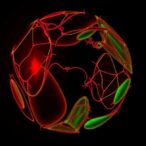
Scientists at the National Institutes of Health (NIH) have unveiled compelling new evidence regarding the relationship between hormone therapy and breast cancer risk in women under the age of 55. Their extensive analysis demonstrates that the type of hormone therapy used prior to menopause significantly influences breast cancer incidence, highlighting crucial considerations for treatment protocols in younger women. This groundbreaking study, drawing from data collected from diverse populations worldwide, offers a deeper understanding of how hormone treatments affect cancer risk and may redefine clinical practice in the management of menopausal symptoms and post-surgical care.
Hormone therapy has long been a staple in the management of menopausal symptoms such as hot flashes, night sweats, and vaginal dryness, particularly for women experiencing abrupt hormonal changes due to surgical interventions like hysterectomy or oophorectomy. These therapies typically fall into two main categories: unopposed estrogen hormone therapy (E-HT) and combined estrogen plus progestin hormone therapy (EP-HT). The nuanced biological mechanisms underlying these therapies have distinct implications for cancer development, which the NIH researchers sought to dissect rigorously.
The study focused on a remarkable sample size of over 459,000 women younger than 55 years from North America, Europe, Asia, and Australia, an unprecedented scale that lends significant statistical power and cross-cultural validity to the results. Researchers meticulously categorized hormone use, separating those who never used hormone therapy, those who utilized estrogen alone, and those who underwent combined estrogen-progestin therapy. This stratification allowed for a granular comparison of breast cancer rates between these groups.
.adsslot_Va3zIBkRCs{width:728px !important;height:90px !important;}
@media(max-width:1199px){ .adsslot_Va3zIBkRCs{width:468px !important;height:60px !important;}
}
@media(max-width:767px){ .adsslot_Va3zIBkRCs{width:320px !important;height:50px !important;}
}
ADVERTISEMENT
Intriguingly, the data revealed that women treated with unopposed estrogen therapy exhibited a 14% reduction in breast cancer incidence relative to women who never underwent hormone therapy. This protective effect was notably more intense in women who initiated estrogen therapy at younger ages or extended its use over longer periods. These findings challenge previously held assumptions about estrogen’s role in breast cancer etiology, especially in a younger, premenopausal demographic.
Conversely, the combined estrogen plus progestin therapy was linked to a marked increase in breast cancer risk. Women who used EP-HT showed a 10% higher incidence of breast cancer than non-users, while those on EP-HT for more than two years faced an 18% elevated risk. This suggests a dose-dependent effect, underscoring the cumulative nature of hormone exposure and the amplified risk it confers with prolonged treatment duration. Researchers emphasize that this finding aligns with prior studies conducted in postmenopausal women but extends the understanding to a younger population.
Crucial to interpreting these findings is the consideration of gynecological surgical status, namely hysterectomy and oophorectomy. Because unopposed estrogen therapy is primarily prescribed to women who have undergone hysterectomy—due to the elevated risk of uterine cancer associated with estrogen alone—this variable holds clinical significance. The study aligned risk differentials according to whether women retained their uterus and ovaries, revealing that those with intact reproductive organs experienced more pronounced breast cancer risks when using combined hormone therapy.
Quantifying the cumulative risk of breast cancer before age 55, the analysis estimated a 4.5% risk for EP-HT users, compared with 4.1% for women who did not use hormone therapy, and 3.6% for those on estrogen only. While these absolute differences may appear modest, the relative risk adjustments spotlight the intricacies in hormone therapy safety profiles and patient risk stratification. These statistics bolster the call for individualized risk assessments in clinical decision-making surrounding hormone therapy.
The molecular underpinnings of these outcomes likely involve the differential interaction of estrogen and progestin with breast tissue receptors. Estrogen modulation alone appears to exert a protective effect, potentially through mechanisms such as enhanced DNA repair or regulation of cellular proliferation. Conversely, progestins may stimulate breast cell mitosis or interfere with apoptotic pathways, thereby increasing oncogenic susceptibility. Continued research into these mechanisms is essential to develop safer hormone therapy regimens or alternative pharmacological interventions.
Lead author Dr. Katie O’Brien, affiliated with the NIH’s National Institute of Environmental Health Sciences (NIEHS), emphasized the practical implications of these findings. She underscored that hormone therapy remains a vital tool for enhancing life quality during menopause but must be prescribed with a nuanced understanding of the associated risks. This study equips physicians and patients with critical evidence to tailor hormone treatments based on individual age, surgical history, and duration of therapy.
Senior author Dr. Dale Sandler noted that these results reinforce the paradigm of personalized medicine in hormone therapy management. Rather than adopting a uniform approach, healthcare providers need to balance symptom relief benefits against individualized cancer risk profiles, especially for women retaining their reproductive organs. He recommends a thorough risk-benefit dialogue, potentially prompting alternative symptom management strategies for women at higher risk.
This comprehensive investigation also harmonizes with existing literature documenting similar hormone therapy-breast cancer risk associations among older and postmenopausal women. By extending these insights to a younger cohort, the study fills a critical knowledge gap and sets the foundation for future guidelines that could reduce hormone therapy-related breast cancer incidence nationally and globally.
Ultimately, these revelations highlight the importance of future research avenues exploring the long-term implications of hormone therapy, including genetic susceptibility factors and interactions with environmental exposures. Integrating molecular biology, epidemiology, and clinical practice will be paramount in optimizing hormone therapy regimens, advancing women’s health, and mitigating breast cancer risks.
This study, published in The Lancet Oncology on June 30, 2025, represents a significant milestone in understanding hormone therapy’s dualistic risk profile. It serves as a clarion call for clinicians to individualize hormone therapy recommendations and for patients to engage in informed decision-making with their healthcare providers.
Subject of Research: Hormone therapy’s impact on breast cancer risk in women under 55 years old.
Article Title: Hormone therapy use and young-onset breast cancer: a pooled analysis of prospective cohorts included in the Premenopausal Breast Cancer Collaborative Group.
News Publication Date: 30-Jun-2025
Web References:
https://www.niehs.nih.gov/index.cfm
https://www.nih.gov/
References:
O’Brien, K., et al. “Hormone therapy use and young-onset breast cancer: a pooled analysis of prospective cohorts included in the Premenopausal Breast Cancer Collaborative Group.” Lancet Oncol 2025; 26: 911–23.
Keywords: Hormone therapy, breast cancer, young-onset breast cancer, estrogen therapy, estrogen plus progestin therapy, menopause, hysterectomy, oophorectomy, cancer risk, oncology, personalized medicine, epidemiology
Tags: biological mechanisms of hormone therapycancer risk factors in womenclinical implications of hormone therapiescombined estrogen progestin therapydiverse populations breast cancer researchhormone therapy and breast cancer riskhormone treatment protocolsmenopause management strategiesNIH hormone therapy researchsurgical menopause effectsunopposed estrogen hormone therapyyounger women breast cancer studies



